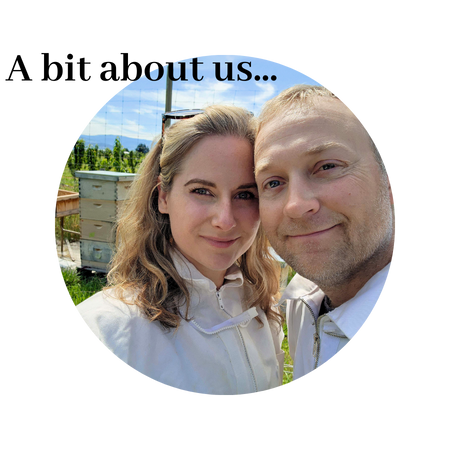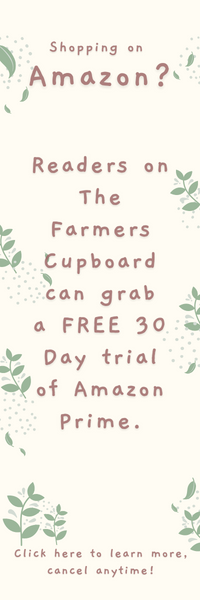Gardening is a rewarding activity, but the intensity of the sun can sometimes be too much for plants to handle. For certain plants it can cause them to bolt and then taste very bitter (for example lettuce) or it can stop the production of the food entirely.
Where we live, there is quite a bit of hot sun in the summer and if we don't shade some of our plants, they are only good through the spring.
Shade cloths for plants are a practical and versatile solution to protect your greenery from excessive heat and direct sunlight. In this article, we’ll dive into what a shade cloth is, how it benefits plants, types of shade cloths that are available, and how to choose and use them effectively in your garden or greenhouse.

What Is A Shade Cloth?
A shade cloth is a specially designed fabric used to reduce the intensity of the sun on plants. It is made of lightweight, durable materials and are designed to filter UV rays and control heat exposure. Shade cloths comes in various densities, allowing gardeners to customize the amount of light their plants receive.
How Does A Shade Cloth Work?
Shade cloths work by blocking a portion of sunlight and dispersing heat. They are typically measured in light filtering percentages, such as 30%, 50%, or 70%, indicating how much light it blocks.
For example, a 50% shade cloth blocks half of the light, making it ideal for plants that need moderate shading.
Benefits of Using Shade Cloth for Plants
Protecting Plants from Sun Damage
Too much direct sunlight can lead to bolting, wilting, or stress in plants. Shade cloths reduce the harshness of the sun, preventing damage and helping plants thrive, especially during the peak heat of summer.
Improving Growing Conditions
By controlling the amount of light and heat, a shade cloth creates an optimal microclimate for plants, especially in greenhouses. This helps maintain consistent temperatures, reduces water loss through evaporation, and encourages healthier growth.
Versatility for Different Needs
Shade cloths aren't just for greenhouses. They can be used in gardens, over raised beds, or as temporary structures to shield plants from extreme weather, including hail, heavy rain or frost.
Types of Shade Cloths
By Material
-
Knitted Shade Cloth: Lightweight, flexible, and tear-resistant cloth is ideal for most gardening applications.
-
Woven Shade Cloth: More durable but a bit heavier, woven shade cloths are suitable for long-term installations.
By Shade Density
-
30%-50% Shade Cloth: Best for shade-loving plants or light-sensitive plants like lettuce and spinach.
-
50%-70% Shade Cloth: Suitable for vegetables like tomatoes, peppers, and cucumbers for ultimate climate control.
-
70%-90% Shade Cloth: Ideal for orchids, ferns, or to provide heavy shading in extremely hot climates.
By Color
-
Black Shade Cloth: Absorbs heat, often used in colder climates to warm plants.
-
White Shade Cloth: Reflects heat and provides even light diffusion.
-
Green Shade Cloth: A common and affordable choice for general gardening use.
How to Choose the Right Shade Cloth for Plants
Identify Your Plants’ Light Requirements
Different plants have varying needs for sunlight. While leafy greens prefer partial shade, sun-loving plants like tomatoes may only need light protection during peak sunlight hours (if any). I personally don't add a shade cloth when I am growing tomatoes, but for my sensitive plants like lettuce who like a little shade, absolutely.
It depends on your crops and your location, and you will learn more about your plants as you go, especially if you keep a plant diary year after year tracking what works best for you in your climate.

Consider Your Climate
Hot, sunny temperatures and climates may require higher shade density, while cooler regions might benefit from lighter options like a woven fabric material or cloth.
Factor in the Structure
Determine where you’ll install the shade cloth. Is it for a greenhouse, a raised bed, the ground or a pergola? The type of installation will influence your choice of material and size and ventilation needs.
For example, if you are planning to cover a raised or ground bed, you will also need a hoop kit to stabilize the shade cloth.
Installing and Using A Shade Cloth For Plants
Installation Tips
- Secure the Shade Cloth: Use zip ties, hooks, or clips to attach it firmly to structures like frames, poles, or greenhouses.
- Ensure Proper Airflow: Allow space for ventilation to prevent heat buildup underneath the cloth.
- Position Strategically: Adjust the angle or placement to block sunlight during the hottest part of the day.
Creative Uses
- Create portable shade by draping cloth over hoops or stakes.
- Build simple shade tunnels for garden rows.
- Use shade cloths to protect patio plants or delicate flowers.
Key Advantages of Shade Cloth: A Quick Overview
- Offers UV protection and protects plants form heat stress and too much sun.
- Reduces water loss through evaporation.
- Enhances plant growth and productivity.
- Versatile for various gardening applications.
- Easy to install and adjust as needed.

Common Applications of Shade Cloth
Greenhouses
Shade cloths are a staple for greenhouse gardening, providing controlled shading to regulate temperature and light levels for vegetables and flowering plants.
Outdoor Gardens
From raised beds to row covers, shade cloths can shield your plants from harmful UV rays during extreme summer heat or protect them from unpredictable weather or excess light.

Livestock and Outdoor Spaces
It’s not just for plants—a shade cloth can also be used to create shaded areas for animals or to cover patios and playgrounds. We also use our shade clothes to help protect our chickens from the scorching sun in the summer by attaching it to part of our chicken run in the backyard.
BEST Shade Cloth Choices on AMAZON
30-50% Shade Cloths:
Ground cover or for hoop gardens: White Fabric Shade Cloth
Premium knitted white mesh shade cloth, choose your own size: Farm Supply Shade Cloth
50%-70% Shade Cloths:
Choose your size 60% shade cloth: Sunblock Shade UV
Black 70% shade cloth: HDPE Material shade
70%-90% Shade Cloths:
80-90% Shade cloth protection, choose your side: Sunblock shade sail
80% White shade cloth, choose your size: Garden shade cover
*If you are looking to protect a raised bed or ground bed, you may also want to get a garden hoop kit.

FAQ: Shade Cloth for Plants
Q: What percentage of shade cloth is best for vegetables?
A: Most vegetables thrive under 30%-50% shade cloth, depending on their sun tolerance in hot weather. For example, leafy greens like lettuce benefit from 50% shading, while tomatoes do well with 30%-40%.
Q: Can I leave shade cloth on plants all day?
A: Yes, but ensure the cloth doesn’t block too much light for sun-loving plants in a greenhouse or in low tunnels. It’s also a good idea to remove or adjust it on cloudy days to maximize natural light.
Q: How do I clean and maintain shade cloth?
A: Hose it down occasionally to remove dirt and debris. If it’s heavily soiled, soak it in soapy water and rinse thoroughly before reinstalling.
Q: Can shade cloths protect plants from frost?
A: While not a primary frost protection tool, shade cloth can provide some insulation when used in conjunction with other materials like frost blankets.
Q: Where can I buy a shade cloth?
A: Shade cloth is available at garden centers, hardware stores, and online retailers. You can purchase it in custom sizes or as pre-cut panels.
Summary
A shade cloth is a valuable tool for any gardener, offering protection from excessive light from the sun, regulating temperature, and improving growing conditions for a variety of plants. With options in material, shade density, and color, you can find the perfect solution for your garden or greenhouse needs. Proper installation and maintenance will ensure your plants thrive while staying protected from the elements.
Investing in a shade cloth not only benefits your plants but also gives you greater control over your gardening environment, making it an indispensable addition to your toolkit.
Here are some other articles you may be interested in reading:
SOIL HEALTH 101 | BEST Soil Testing Kits
Best Soil For Orchids (Article)
Did you like this article?
❤️ Here's how you can support our blog:
My name is Linnea and I am a backyard gardening enthusiast! Along with my husband and our two kids (and chickens, ducks and our little dog Izzy). Our hobby - growing our own food and making our meals from scratch. My blog, The Farmers Cupboard, is the website that blossomed from that passion. I love every second I spend sharing our hobby with like minded backyard growers.
It's easy to support my blog, and it is so appreciated. Please SHARE an article somewhere, pin a photo to your Pinterest board, follow on any of our social medias or sign up for our newsletter! That's it!
These little things help our blog grow and allow us to continue doing what we love: growing good food and sharing what we learn.
PINTEREST PASSIONATE? We're opening up our cupboard to you!
Click on the pin below made just for you. It will bring you right to my little Pinterest community, where I would love for you to FOLLOW The Farmers Cupboard and see all of our gardening and backyard dream ideas!
Let's grow good things together!












0 comments